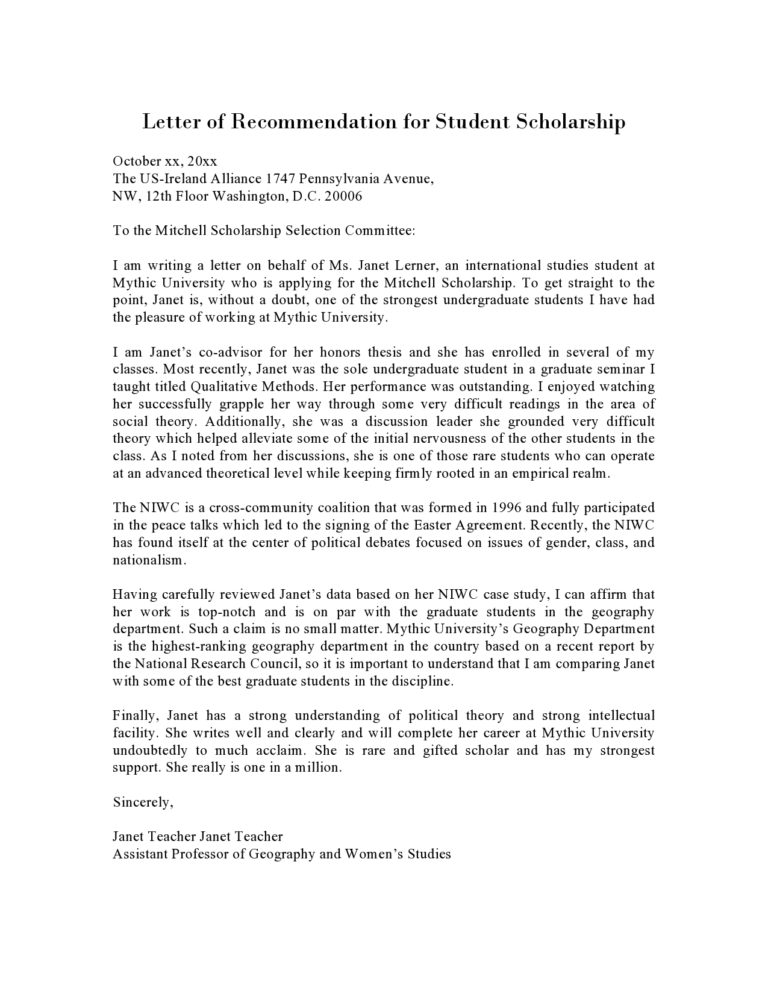Stanford University is one of the most prestigious institutions of higher learning in the world, and receiving a scholarship to attend this esteemed university is a dream come true for many students. However, the competition for these scholarships is fierce, and the admission process can be daunting. One crucial component of the application process is the recommendation letter, which can make or break a student’s chances of securing a scholarship. In this article, we will delve into the world of Stanford scholarship recommendation letters, exploring their importance, characteristics, and tips for securing a strong letter.

Why are Recommendation Letters Important?
Recommendation letters are a vital part of the Stanford scholarship application process. They provide an opportunity for the admission committee to gain insight into a student’s academic abilities, personal qualities, and potential for success. A well-written recommendation letter can highlight a student’s strengths, achievements, and experiences, making them a more competitive candidate for a scholarship. On the other hand, a weak or generic letter can harm a student’s chances of securing a scholarship.
Characteristics of a Strong Recommendation Letter
So, what makes a strong recommendation letter? Here are some key characteristics:
- Specificity: A good recommendation letter should be specific about a student’s achievements, qualities, and experiences. Avoid generic statements and focus on concrete examples that demonstrate a student’s strengths.
- Personalization: The letter should be personalized to the student and the scholarship they are applying for. Avoid using template letters or generic language that could apply to any student.
- Depth of knowledge: The letter should demonstrate a deep understanding of the student’s academic and personal background. This shows that the recommender has taken the time to get to know the student and is invested in their success.
- Objectivity: While it’s natural for recommenders to be enthusiastic about a student, the letter should remain objective and avoid exaggeration or bias.
- Professionalism: The letter should be well-written, free of errors, and formatted properly.
Tips for Securing a Strong Recommendation Letter
So, how can students secure a strong recommendation letter? Here are some tips:
- Choose the right recommender: Select a recommender who knows you well and can speak to your strengths and achievements. This could be a teacher, professor, mentor, or supervisor.
- Give them plenty of time: Provide your recommender with plenty of time to write and submit the letter. A minimum of 2-3 months is recommended.
- Provide necessary information: Give your recommender all the necessary information about the scholarship, including the application deadline, requirements, and your personal statement.
- Follow up: Follow up with your recommender to ensure they have submitted the letter and to express your gratitude.
- Proofread: Proofread the letter carefully to ensure it is error-free and well-written.
Stanford Scholarship Recommendation Letter FAQs
Q: Who should I ask to write my recommendation letter?
A: Choose a recommender who knows you well and can speak to your strengths and achievements. This could be a teacher, professor, mentor, or supervisor.
Q: How many recommendation letters do I need?
A: Typically, Stanford requires 2-3 recommendation letters as part of the scholarship application process.
Q: Can I write my own recommendation letter?
A: No, it’s not recommended to write your own recommendation letter. The letter should come from an objective third party who can provide an unbiased assessment of your abilities and potential.
Q: How long should the recommendation letter be?
A: The length of the recommendation letter can vary, but it’s typically 1-2 pages in length.
Q: Can I submit additional recommendation letters?
A: Yes, you can submit additional recommendation letters, but it’s not necessary. Make sure the letters are relevant and add value to your application.
Conclusion
Stanford scholarship recommendation letters are a critical component of the application process. A strong letter can make a significant difference in a student’s chances of securing a scholarship, while a weak letter can harm their chances. By choosing the right recommender, providing necessary information, and following up, students can increase their chances of securing a strong recommendation letter. Remember, the key to a successful recommendation letter is specificity, personalization, depth of knowledge, objectivity, and professionalism. By keeping these characteristics in mind, students can ensure that their recommendation letter is well-written, effective, and helps them stand out in a competitive pool of applicants.
In conclusion, securing a Stanford scholarship is a challenging and competitive process, but with the right guidance and support, students can increase their chances of success. By understanding the importance of recommendation letters and following the tips and guidelines outlined in this article, students can take the first step towards securing a scholarship to one of the world’s most prestigious universities. Remember to stay focused, work hard, and persevere, and you may just find yourself attending Stanford University as a scholarship recipient.
Closure
Thus, we hope this article has provided valuable insights into The Importance of Stanford Scholarship Recommendation Letters: A Comprehensive Guide. We hope you find this article informative and beneficial. This is a platform that provides free quality verified information on latest scholarships to study abroad for international students (Undergraduates and Postgraduates).
On this channel, you will find:
Fully Funded Scholarships;
Full tuition Scholarships;
Funded Internships;
Research scholarships and lot more.
Subscribe
youtube.com/c/InternationalScholars
Whatsapp Community
whatsapp.com/channel/0029VaeENZlIN9itNHLur81e
Telegram Channel
t.me/escholarships
Facebook Page
facebook.com/escholarsinfo
X (Twitter)
x.com/Int_Scholarsltd
LinkedIn
ng.linkedin.com/company/international-scholars
See you in our next article!

